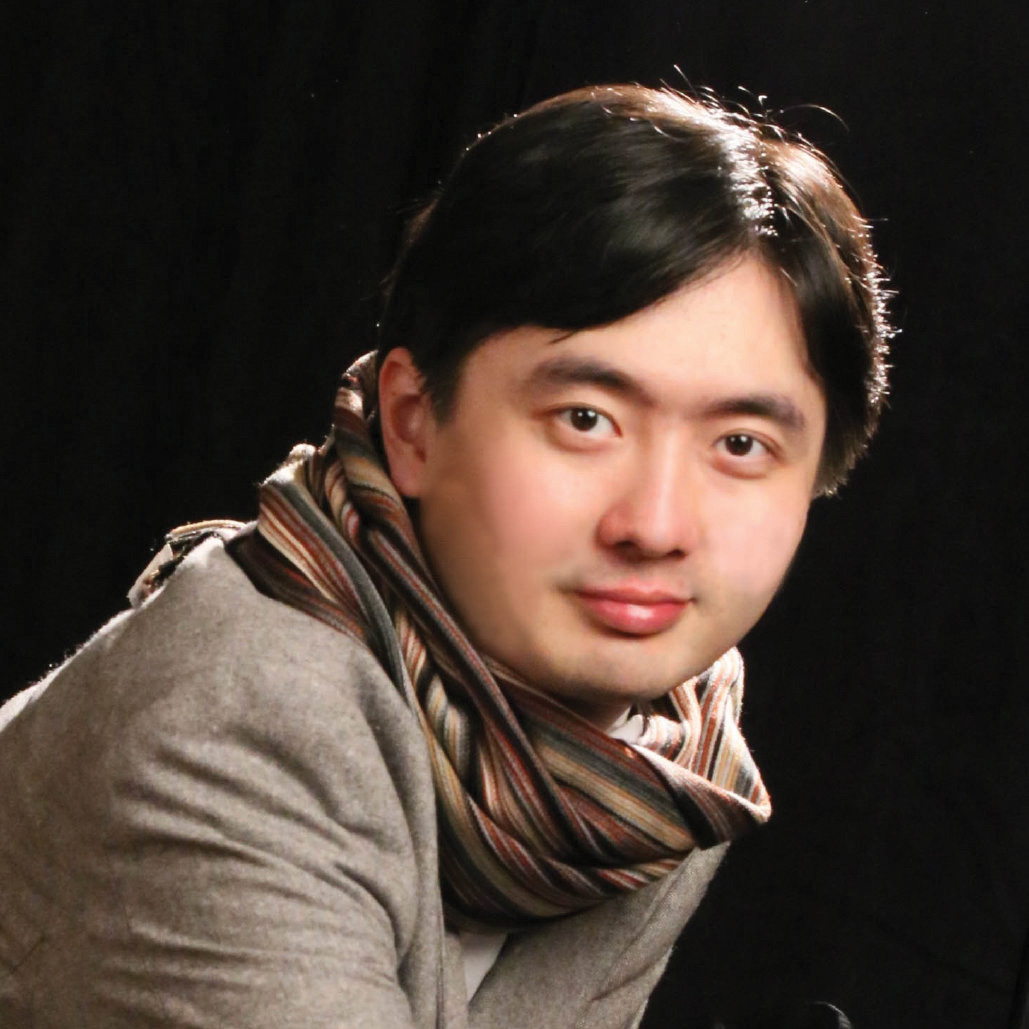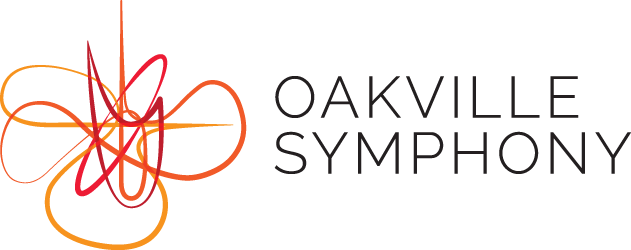Guest Artist:
Sheng Cai, Piano
Program
KENINS – Folk Dance and Fugue
PROKOFIEV – Symphony #7
SCHUMANN – Piano Concerto
February 2–3, 2019
Oakville Performing Arts Centre
Program Notes
Talivaldis Kenins (1919 – 2008): Folk Dance Variations and Fugue
Born in Latvia, Kenins started piano studies at age five and began composing when he was eight. He had much of his formal education in France, and often supported himself in postwar Paris by accompanying vocalists, serving as pianist for theatrical productions, and playing in dance bands. He moved to Canada in 1951 to become organist and music director at the Latvian Lutheran Church in Toronto, and joined the faculty at the University of Toronto the following year.
Kenins wrote eight symphonies and many chamber music pieces, concerti, vocal works, and educational pieces. The clarity of his musical expression and consistency of his craft have resulted in Kenins becoming one of Canada’s most commissioned and performed composers.
(Notes adapted from Canadian Music Centre website).
Sergei Prokofiev (1891 – 1953): Symphony No. 7 in C-sharp minor
I: Moderato II: Allegretto III: Andante espressivo IV: Vivace
Prokofiev is well known for his “simple” music aimed at children, such as Peter and the Wolf. In fact, the origin of the Seventh Symphony was a State commission to write a piece for a children’s radio broadcast. The Soviet government had previously been suspicious of Prokofiev, who had lived for many years in the West, and his work had even been banned for some time. At this late stage of his life, Prokofiev had been worn down and impoverished by the political system. Although the Seventh was originally conceived as a piece based on childhood memories, it eventually grew into an extensive and complex work for large orchestra, partly based on sad reminiscences of his life.
Despite his major health problems, Prokofiev imposed a strict routine on himself for composing, perhaps realising that he had limited time left to achieve his artistic goals. The symphony was completed in 1952, and its premiere became the last performance of his own work that he witnessed before his death the following year.
The first movement is illustrative of the contrast between sad ideas (an opening theme in the strings) and more optimistic ideas (from the winds). Towards the end, there is a mechanical theme in the percussion, suggesting that “the clock is ticking” towards death, with a provocative minor chord as a final question.
In the Allegretto, the question is temporarily answered with a sarcastic and funny waltz. Various sections of the orchestra are highlighted, but from time to there are characteristic Prokofian outbursts. The movement closes with elements of a Tchaikovsky-like fanfare. The slow third movement is more reflective, containing a long opening melody and several variations.
The final Vivace brings back selected themes from earlier movements, but is much more animated. The “ticking clock” in the percussion also eventually returns, and dark chords slow everything down to the very last note. Although Prokofiev had modified the score to provide a louder and more dramatic ending (in order to win a substantial monetary prize), he let it be known that the original “quiet” ending (as adopted by the Oakville Symphony) was the one that he preferred.
Robert Schumann (1810-1856): Piano Concerto in A minor, Op. 54
I: Allegro affettuoso II: Intermezzo; andantino grazioso III: Allegro vivace
Schumann developed this work over three years, during an intense time of composing, frequent travel, and threats to his delicate health. Despite these stresses, the concerto has a warm and romantic glow, perhaps because of Schumann’s happy family situation. In 1840, he had married Clara, herself a successful concert pianist, and with whom he eventually had eight children. Clara, ever a strong proponent of her husband’s work, was the first soloist in 1845.
The concerto was constructed piecemeal. The first movement was originally a stand-alone Phantasie, played by Clara at informal concerts. Attempts to publish it separately had no luck. The third movement was originally a Rondo, which was then added to the Phantasie, together with the Intermezzo, to achieve the final form of the whole concerto.
The first movement Allegro has a non-classical structure, and the orchestra is somewhat subservient to the piano. After an opening flourish from the soloist, an oboe theme becomes the basis of several subsequent variations. The cadenza is almost entirely written out by Schumann.
The romantic second movement offers more dialogue between piano and orchestra, and then passes to the development of a cello theme. The music continues without pause into the final Allegro. This involves the distinctive device of the hemiola (three bars of two beats giving the impression of two bars of three beats), a fugue in the development phase, and a long coda.
Notes © by Stephen Walter
About Sheng Cai

Pianist Sheng Cai has embraced the keyboard tradition that epitomizes the greatness of the romantic virtuoso. His performances have touched audiences and won the praise of critics on three continents. Of his Chopin 1st Piano Concerto the Toronto Star headlined: “Young pianist impresses at debut”, and continued, “a young man with real talent… from a clear, singing tone to a subtle sense of rubato to a judicious choice of tempi… some of the same qualities embodied in Pollini’s approach”. Honored with a number of prizes and awards, Sheng Cai has been described as a pianist “with great confidence… gave more lucidity, color and power” by the Birmingham News.
Since his debut with the Toronto Symphony at just fifteen years old, Sheng Cai has since performed a broad spectrum of concerto repertoire — Bartok, Beethoven, Chopin, Liszt, Gershwin, Grieg, Mozart, Prokofiev, Rachmaninoff, Saint-Saens, Schumann, and Tchaikovsky with numerous orchestras as guest soloist such as Toronto Symphony, Quebec Symphony, Windsor Symphony, Fort Collins Symphony, New Bedford Symphony and Shanghai Sympnony, as well as with the Calgary Philharmonic, Ontario Philharmonic, Jalisco Philharmonic of Mexico and many others. In Canada Sheng Cai has also performed with numerous regional orchestras such as Sudbury, Kingston and Kamloops Symphonies, and with the Winnipeg Symphony Chamber Players and others. He has worked with conductors such as David Lockington, Keith Lockhart, Yoav Talmi, Glen Fast, Robert Franz, Bruce Dunn, Guoyong Zhang, Wes Kenny, Marco Parisotto and Eckart Preu.
In recitals, Sheng Cai has been heard in North American venues such Steinway Hall in New York, Jordan Hall in Boston, the Cleveland Play House, the Modern Art Museum in Fort Worth, the Alys Stephens Center in Birmingham, CBC’s Glenn Gould Studio in Toronto, and other distinguished venues in Stratford, Elora, Montreal and Winnipeg. In China, he inaugurated the Ningbo Concert Hall, giving both recitals and concerto performances. As a chamber musician, Sheng Cai has collaborated with a number of fine artists, including the Enso Quartet. Many of his performances have been broadcast on CBC Radio and he has recorded a CD for the CBC. In addition, he was invited to take part in the filming of a Franz Liszt DVD of Ophra Yerushalmi.
Sheng Cai also recorded at the Glenn Gould Studio for Concertino Praga International Competition in the Czech Republic, these were released under Canadian Broadcasting Company label. He was top-prize winner at competitions throughout his teenage years, including the First Prize at the TD bank sponsored National Piano Competition, the Canadian Music Competition, Toronto Music Competition, the Montreal Symphony Orchestra Piano competition, Toronto Symphony Piano Competition, and was the youngest finalist and special prize winner at the Bosendorfer International Piano Competition and the youngest finalist at Hilton Head International Piano Competition.
Sheng Cai is instrumental in advocating many neglected works that are peaks of the piano literature, works by composers such as Busoni, Enescu, Kablevsky, Medtner, Villa-Lobos and a number of his own works frequently shows up on his concert programs, his creative programming has made audience aware of such treasures of the piano literature deserves a wider audience.
Born in China, Sheng studied at Shanghai conservatory of Music and was a top-prize winner of the National Competition in 1998. The following year, his family immigrated to Canada where he began study at the Royal Conservatory of Music in Toronto. Sheng Cai earned his Bachelor of Music Degree under full scholarship at New England Conservatory in Boston. His teachers have included pianist Anton Kuerti, Russell Sherman and Hungkuan Chen.
